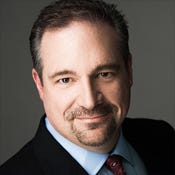SaaS is not only changing the way we use software but also how vendors sell software... In the traditional sales model, the idea is to dazzle the customer in the beginning, make huge promises, and then collect the big check... In the SaaS model, the power is really with the customer, and the sales people have to take a very different approach to selling.

In this article in CRMBuyer, "Compensating SaaS Sales: Turning Hunters Into Farmers," it's becoming clear that SaaS is not only changing the way we use software but also how vendors sell software.
"Things aren't the way they used to be in software sales departments. Traditionally, salespeople relied on hefty commission checks after landing big deals. Now, with the widespread adoption of SaaS products, vendors are adjusting their compensation models and salespeople are seeing smaller, but more regular, commission payouts."In my past, I've served as both the CTO and CEO of software companies. In all cases, the sales staff were meat-eating, big-deal guys. As we moved to a service model and the deals became subscription-based versus large license deals, it was hard for the "traditional sales people" to adjust. Indeed, many left to search for other software companies that were sticking with the traditional model. However, those companies are moving to a subscription-based model as well.
At the core of the issue is the way you deal with customers. In the traditional sales model, the idea is to dazzle the customer in the beginning, make huge promises, and then collect the big check. Of course, there is the promise to following up with customer service and support. I'm not saying that traditional software companies don't do a good job at this; indeed, in many instances, that kind of service is available for an additional fee. However, that's typically a process driven by the support group. The sales guy has moved on to the next deal. While the customer is valued, this is really a model that benefits the software company most. Moreover, the fact that the software is installed within the firewall, and the company has become dependent on the business processes supported by the software, means that it is very difficult to displace and costly to support internally.
"Traditionally, a salesperson would sell clients on-premise software packages that might cost in the neighborhood of $250,000. The client would use the application for several years before buying a new product or upgrade. With SaaS, customers can enter a variety of subscription contracts, paying a fraction of the total cost -- $7,000 a month, for instance."
In the SaaS model, the power is really with the customer and the sales people have to take a very different approach to selling. Since customers typically don't pay upfront for the software, sales people have to learn how to engage customers over a much longer period of time, opting for a few additional seats as the objective for the week, not huge mega deals that span years and years. Indeed, if the customer decides not to continue with the service, there is no software to uninstall nor hardware to sell on eBay. They are out with the stroke of a mouse.
"Instead of big-game hunters, SaaS salespeople can take on the role of farmers," Cobb said, "working hard to renew their income source from the same clients year after year."
It's a different model, but good for the customers. Thus, it's time to change the way you sell.SaaS is not only changing the way we use software but also how vendors sell software... In the traditional sales model, the idea is to dazzle the customer in the beginning, make huge promises, and then collect the big check... In the SaaS model, the power is really with the customer, and the sales people have to take a very different approach to selling.
About the Author(s)
You May Also Like







